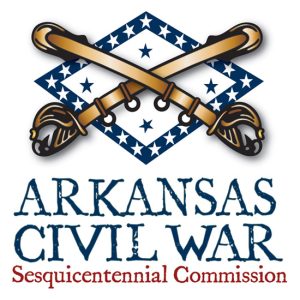calsfoundation@cals.org
Attack on Jacksonport
| Location: | Jackson County |
| Campaign: | Attack on Jacksonport, Arkansas |
| Date: | April 20, 1864 |
| Principal Commanders: | Colonel Robert R. Livingston, Commanding the District of Northeastern Arkansas (US); Lieutenant Colonel Joseph B. Love, Freeman’s Brigade (CS) |
| Forces Engaged: | First Nebraska Cavalry, Elements of the Eleventh Missouri Cavalry, and an unidentified artillery battery (US); Freeman’s Brigade with possible elements of McRae’s and Rutherford’s Brigades (CS) |
| Estimated Casualties: | 2 wounded (US); 10 killed, unknown number wounded, and 1 captured (CS) |
| Result: | Union victory |
Having moved to Jacksonport (Jackson County) from Batesville (Independence County) in April 1864 to improve supply allocation, communication, and potential access to reinforcements, Colonel Robert R. Livingston’s camps were attacked by a combined Confederate force commanded by Lieutenant Colonel Joseph B. Love on April 20, 1864. The attack was unsuccessful.
Commanding the District of Northeastern Arkansas, Union colonel Robert R. Livingston was finding his post at Batesville difficult to maintain due to a lack of resources aggravated by guerrilla harassment of foraging expeditions. Over time, it became clear that movement down the White River to a more practical location such as Augusta (Woodruff County), or even as far as DeValls Bluff (Prairie County), was necessary. Leaving 450 men in Batesville, Livingston took approximately 1,400 men into Jackson County in April 1864. Establishing camps around Jacksonport, a port town on the White River, he planned to take some 600 men to Augusta to acquire more supplies and reinforcements in late April.
Monitoring the movement of the Federals, Lieutenant Colonel Joseph B. Love, commanding Colonel Thomas R. Freeman’s Brigade as Freeman was recovering from wounds received in the Action at Fitzhugh’s Woods, lacked the manpower to force Livingston out of his camps. Love—who may have also led elements of Brigadier General Dandridge McRae’s and Captain George Rutherford’s commands, as they are referenced in the Union reports, and who might have even been under McRae’s command—planned an attack on Jacksonport that could draw troops away from defensive positions and provide opportunities for a victory.
On the morning of April 20, Confederate skirmishers engaged pickets from the First Nebraska Cavalry near the Elgin Road. Lieutenant Colonel William Baumer, commanding the First Nebraska Cavalry, sent Captain Henry H. Ribble forward with eighty dismounted men to disperse the Rebels. They found Love’s force prepared for battle just south of Bergen Lake on the River Road, and a sharp exchange occurred. As the Federals forced the Confederates to retreat, Livingston—who expected a flanking maneuver might be used—ordered troops to various locations around Jacksonport, but no attack materialized on those positions.
Following the Confederates, Ribble discovered a second battle line two miles south of the first on the River Road. Bringing Federal reinforcements, Baumer, now the ranking officer on the field, took the combined Federal force forward and charged Love’s second line. The Confederates fled, stopping only to form a third position farther down the River Road that was quickly shattered as well.
After a pause to regroup, Baumer ordered continued pressure placed on the Confederates and marched his troops toward the bridge that spanned Village Creek. Finding the Confederates attempting to destroy the bridge over the creek, Baumer chased the Confederates away, holding his position around the bridge. Later in the day, Livingston arrived with artillery pieces and elements of the Eleventh Missouri Cavalry, but the skirmish was over. Livingston held his position at the bridge, as he would not risk his artillery on the poorly constructed structure.
While a surprise, the Confederate attack at Jacksonport was a complete failure. Livingston’s men were not dislodged, and Love found no vulnerabilities to exploit in the attack. In fact, the Federals showed quick reaction to the impending threat and suffered minimal casualties. Livingston noted in his report that the Confederates lost ten killed, an unknown number of wounded, and one captured, while his force only suffered two wounded.
Seeing little real threat to his position remaining, Livingston returned to his planned movement down the White River toward Augusta. On April 22, he marched supporting Brigadier General Christopher C. Andrews’s unsuccessful quest to attack Brigadier General Dandridge McRae’s rumored camp north of Augusta. Unable to find McRae, who might have actually been involved in the attack on Jacksonport days earlier, Livingston returned his fatigued column to Jacksonport on April 24. They had acquired more livestock, but his men and horses were exhausted.
The April 20, 1864, attack on Jacksonport is typical of the hit-and-run style of engagement used by small Confederate forces against larger Union camps. Lacking the ability to openly defeat Union troops in defensive positions, the Confederates hoped to draw the Federals out and exploit vulnerabilities—a difficult plan, as the Confederates were typically outmanned in these small engagements. Confederate forces had more success in northeastern Arkansas by harassing supply, communication, and foraging activities. The Attack on Jacksonport is also typical in that it resulted in low casualties by both antagonists. The vast majority of these skirmishes had no real strategic value for either side.
For additional information:
The War of the Rebellion: A Compilation of the Official Records of the Union and Confederate Armies. Series I, Vol. 34, pp. 893–898. Washington DC: Government Printing Office, 1891.
Watson, Lady Elizabeth. Fight and Survive: A History of Jackson County, Arkansas in the Civil War. Conway, AR: River Road Press, 1974.
Derek Allen Clements
Black River Technical College







Comments
No comments on this entry yet.